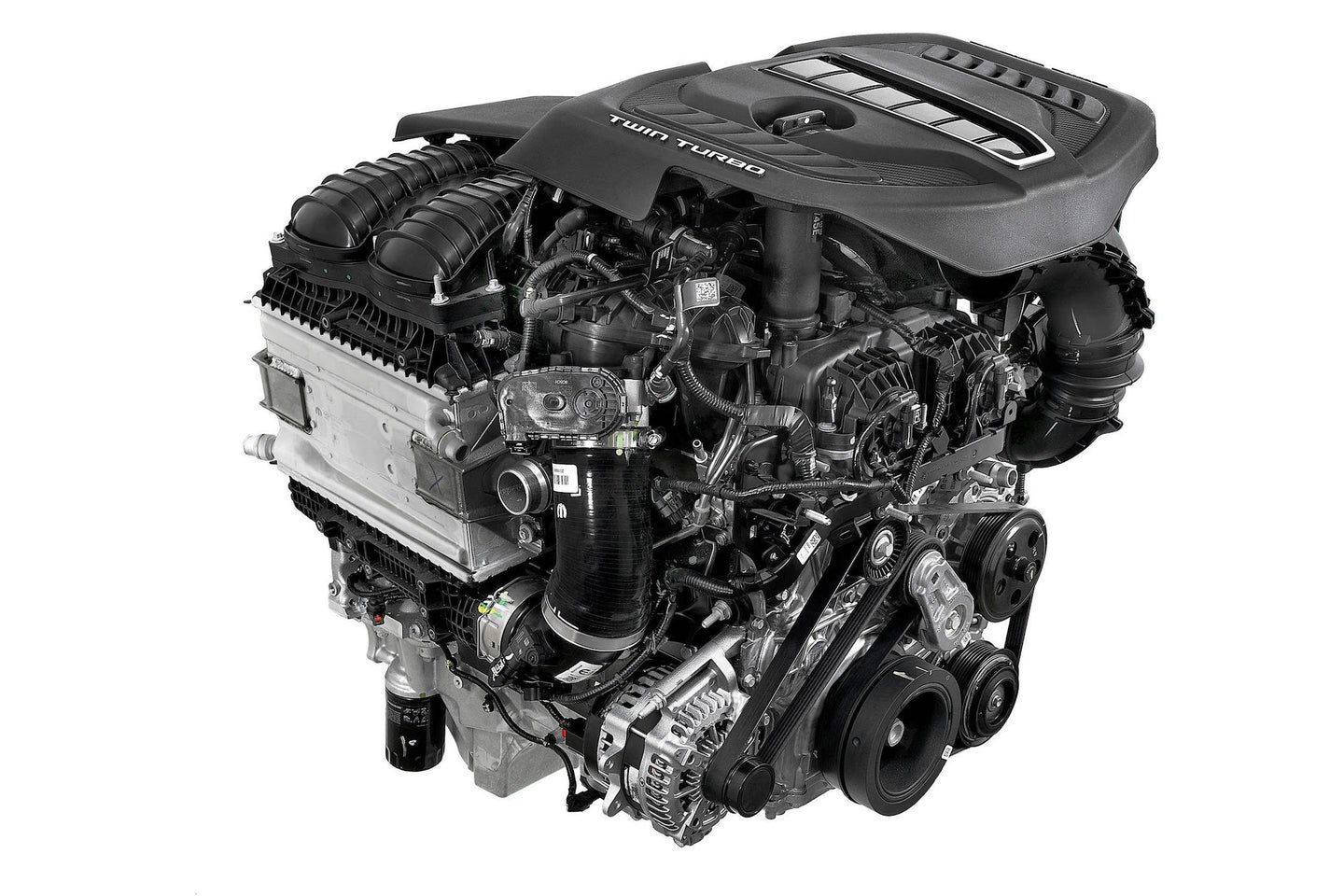Meet the Hurricane, a new twin-turbocharged engine by Stellantis
The new power plant is said to be 15 percent more efficient. Here's how it works.

Several automakers have announced over the last couple of years that they would be winding down their investment into internal combustion engine technology in favor of spending their research and development dollars on electric propulsion. It’s a trend that is as wide as it is deep, with Mercedes-Benz parent company Daimler committing to it as early as 2019, and companies like Hyundai, General Motors, and Nissan following suit. As emissions regulations become more stringent all over the world, and consumers increasingly transition toward an electric future, it would make sense that most gasoline-powered engines would slowly trod toward their demise.
Then there’s Stellantis. On March 25, Stellantis introduced a brand new twin-turbocharged inline-six engine, dubbed Hurricane, as a fresh internal combustion engine design to promote a product-line-wide focus on efficiency. The company, which is made up of 16 global automotive brands, hopes to implement the new engine as a stop-gap to reduce its dependence on large-displacement inefficient Hemi V8 engines for its Dodge, Ram, Jeep, and potentially other brands.
While developing a new internal combustion engine in 2022 might indicate a reticence when it comes to the electrification of its product lines, Stellantis has also stated that it is committed to a 50-percent battery electric vehicle sales mix by the end of the decade. The new engine is apparently a move towards making the other 50 percent as efficient as it can be. The American arm of Stellantis, namely Dodge, Chrysler, Ram Trucks, and Jeep are all currently reliant on large displacement gas-guzzling powertrains. Their customers will likely want to retain gas propulsion, rather than make the switch to EV. In short: Stellantis has to maintain powerful gasoline engines for its customers, while making them more efficient to meet regulations.
[Related: Ford added more power to its electric Mustang Mach-E. Here’s how it drives.]
That’s where the new Hurricane engine comes into the picture. The new 3.0-liter twin-turbocharged inline six-cylinder engine is said to deliver better fuel economy and lower emissions than larger naturally-aspirated engines, while making more horsepower and torque than much of the competition. The engine will be available in two states of tune, a 400-horsepower version tuned to optimize fuel economy, and a high-output 500-horsepower spec optimized for performance and utility. Stellantis claims the Hurricane achieves better performance than a typical in-class V8 engine, while delivering 15-percent better fuel economy.
“As Stellantis aims to become the U.S. leader in electrification, with a 50% battery-electric vehicle (BEV) sales mix by 2030, internal combustion engines will play a key role in our portfolio for years to come and we owe it to our customers and the environment to provide the cleanest, most efficient propulsion possible,” said Micky Bly, Stellantis head of propulsion systems, in a press release. “The Hurricane twin-turbo is a no-compromise engine that delivers better fuel economy and an important reduction in greenhouse gasses without asking our customers to give up performance.”
The Hurricane six is based largely on Stellantis’ Global Medium Engine 2.0-liter four-cylinder, though with two additional cylinders added on. That 2 liter is currently found in everything from the Jeep Wrangler to the Maserati Levante Hybrid, and has served the company well since 2016. Design features like bore, stroke, and cylinder spacing, are common across both engines, reducing machining and parts costs through economies of scale.
[Related: The Rivian R1T breaks the electric-pickup game wide open]
So how does a turbocharged six-cylinder power plant make for a more efficient truck? Turbochargers feed compressed air into the combustion chamber to create a more powerful oxygen-rich explosion in the engine, effectively making more power from a smaller engine. In the case of the Hurricane engine, rather than using one large turbocharger, which takes more engine RPM to spool up, the engineers specified two smaller turbos for better off-the-line acceleration and more snappy response to throttle input. Combined with an ultra-low-friction cylinder plasma coating, high-pressure direct fuel injection, and a seriously robust intake, exhaust, and charge air cooling system, this engine is at the bleeding edge of gasoline-powered propulsion.
Much like the 2-liter four-cylinder version, this new Hurricane six is built from the start with hybridization in mind. The wildly successful Jeep Wrangler 4xe has proven that plug-in hybrids can be fun and exciting, even in off-road environments. Dodge has built its name as a performance brand, delivering its “Hellcat” line of extremely fast and powerful Challengers and Chargers in the last decade. With a high-performance version of the Hurricane, and the instant add-on power and torque of a hybrid electric motor, perhaps the next evolution of the Hellcat can achieve better than 13 miles per gallon (yes, you read that right: a Hellcat does not have great fuel efficiency) while being even quicker than before.
These turbocharged-six engines are the kind of exciting development that can happen when companies are pressured to move away from big V8s in an effort to improve their full lineup fuel economy and reduce emissions. Plus, a 15-percent increase in fuel economy these days is a welcome boost when gas costs as much as $6 per gallon.